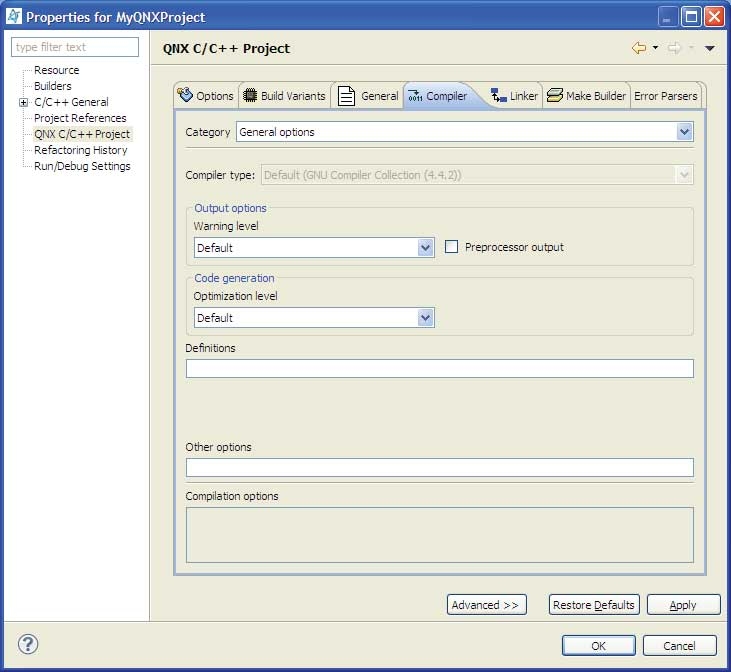The Compiler tab changes depending on which of these categories you select:
- General options
- Extra source paths
- Extra include paths

- Compiler type
- If you've selected General options, the first item to specify is a type of compiler (automatically detected by the IDE), such as GCC 4.4. Note that selecting Default is different from selecting the version that happens to be the default.
- Output options
- Here you can specify the warning level (0 to 9), i.e. the threshold level of warning messages that the compiler outputs. You can also choose to have the preprocessor output intermediate code to a file; the IDE names the output file your_source_file.i (C) or your_source_file.ii (C++), using the name of your source file as the base name.
- Code generation
- For the Optimization level, you can specify four levels: from 0 (no optimization) to 3 (most optimization). In the Stack size field, you can specify the stack size, in bytes or kilobytes.
- Definitions
- Here you can specify the list of compiler defines to pass to the compiler on the command line in the form -D name[=value]. You don't have to bother with the -D part; the IDE adds it automatically.
- Other options
- Here you can specify any other command-line options that aren't already covered in the Compiler tab. For more information on the compiler's command-line options, see qcc in the Utilities Reference.
- Extra source paths
- If you want to specify source locations other than your project's root directory, select this category. Then click the appropriate
button to specify the location:
- Project… — You can add source from another project in your current workspace. Note that the IDE uses relocatable notation, so even if other team members have different workspace locations, they can all work successfully without having to make any additional project adjustments.
- QNX target… — You can add source from anywhere in or below the ${QNX_TARGET} directory on your host.
- Disk… — You can choose to add source from anywhere in your host's filesystem.
- Extra include paths
- You can specify a list of directories where the compiler should look for include files. The options here are the same as for Extra source paths, except that here you can change the order of directories in the list, which can be important if you happen to have more than one header file with the same name.